The first association that occurs when reading the name of this plant is a bird from the genus of Ryabchikov, named so because of its pedestrous, "ripping" plumage. But it will be not talking about birds, but about an unusually attractive herbaceous plant from the Lily family, actively used to decorate the garden.
The Russian name plant received due to the most common colorful color of his flower-relative - Rybiku Russian. The Latin Plant Name - (Fritillária), or freethylene, translates as a "chessboard".
Mountain Imperial: Description
The emperorsky Ryabchik is a perennial plant, multiplied with the help of bulbs, blooms for a short time, about 3 weeks, as a rule, in the second half of May. The bulb consists of a variety of thorough scratches, kidneys appear in the sinuses of some scales, of which new plants are developing subsequently. In the spring of the bulbs grows stem, densely covered with alongful glittering leaves, and if the plant is quite an adult, the stem goes into a strong high bloomer length from 60 cm and up to one and a half meters ending with a bunch of pointed leaves and a bouquet of drooping colors under them. The flowering plant is similar to a small palm, generously decorated with large flowers, in shape resembling bells.
Flowers of the emperor's row are red, orange, yellow and white. When cutting plants for a bouquet, a part of the stem with the leaves is left, because without a stem, the bulb ceases growth. The smell of the flower is specific, so first of all it is still suitable for decorating the flower bed in the garden. There is a belief that the smell of the plant scares mice and moles, and in the radius of the half-meter from the ripples they will not settle.
Mountain Imperial: landing
The landing place is chosen well lit or in a light half, special attention is worth paying the soil, it should be loose and fertile. It will fit an elevated place where there is no stagnation of water.
Regardless of whether you are searched by your own ripples, or purchased bulbs, the optimal time for landing is the second half of August - the beginning of September, the deadline - mid-September. Lukovitsa sit down and later, until October, subject to the organization of shelter for the winter. In addition, long-term storage will drag the bulb and it will lose too much moisture.
The bulbs of the emperor's row, which achieve 300 grams in weight and will be able to bloom the next year.
For landing prepares a landing yam with a diameter of 30-40 cm. Part of the earth is taken out, the rest is added biohumus or humid and thoroughly mixed. If the soil is too clay, add several springs of river sand - light, crumbly, without clay impurities.
The bulby of the emperor's rowed bulb is sufficiently deep compared to other bully, the pit for an adult plant is 25-30 cm. Focus on a rule: the depth of the pit must be three times more than the diameter of the bulbs. This is done in order to keep the bulb and flower kidneys from frozen in cold winters.
In the landing hole form a deepening, sand pour into the bottom, set the bulb slightly under the tilt so that the excess moisture does not accumulate in scales. Carefully spread the roots formed in the summer, trying not to break them, fall asleep space around the bulbs, and a little on top, then fall asleep and watered well.
Over time, the Earth above the bulb can settle, so it's better to immediately pour a small hill at the landing site of the Ryabik, as water will be slaughtered in the yam, which adversely affects the plant. The landing site is planned, as the bulb on the surface is not visible, and very easily flooding the landing site.
Ryabchik Imperial: Care
Gardeners are often wondering: "Why doesn't the emperor's mouth bloom?". In fact, for flowering Ryabchikov, you need to be complied with several conditions:
- When choosing the planting material, the bulb choose a large, without signs of disease. The Ryabchik imperial blooms in a mature age, the mature bulb in diameter is from 8 cm. If the bulb is smaller, it means it is still young, in the first year it will not bloom, it will only grow.
- When landing, the bulb is located deeply, only then she throws well, and can bloom the next summer.
- A prerequisite for flowering is the right summer storage of bulbs. Let us dwell on this point. The flowering of the emperor row begins in May. Some time after the plant is wondering, the leaves will begin to turn it out, and the blooming can be launched. This happens usually 40 days after flowering, at the end of June-early July. The emperor ripple digs, washed, treated with fungicide and sent to dry storage. The fact is that in the homeland of the row in the summer is dry and hot, there are practically no precipitation. Therefore, in the summer, Ryabchiki stored in a warm dry place, for example, in a attic or at home. In such conditions, flower kidney is laid. Immediately after digging, the recommended storage temperature up to 30 ° C is then stored at 25 ° C to August.
Care behind the emperor in the open soil is the same as behind lilies. Double season, the plant is fed by complex mineral fertilizers. The first feeding is made in the second half of April, the second - after the flowering of plants. At this time, the plant is increasing the bulb.
Even then when the plant is dropped, 1-2 times a month. Stop irrigated when the green part of the plant fades.
Dumping a ripper Imperial carefully not to damage the bulb. It is not necessary to wait until the above-ground part will dry out completely, during this time the bulb may be faced, and it will be more difficult to find the landing site. Approximate time for digging comes in late June - early July. During the vegetation, the bulb grow and it appears children - small lows.
Ryabik Imperial: reproduction
Plant seeds and fission of bulbs. Both methods are equally in demand and applied depending on the desired result.
Reproduction of seeds
The reproduction of seeds is a long and time-consuming process, little popular among the gardeners, but is widely used in the industrial breeding of colors. Allows you to get a lot of plants, but it is necessary to wait for their flowering 7 years.
Seed the seeds of the emperor's mouth in loose fertile soil, closeing them to a depth of 2 cm, and so leave winter. The surface of the soil is mulched by a humid layer 1-2 cm. Seeds are resistant to extinction and do not need additional coverage for the winter. In the spring of seeds grows first leaflets. In the first year, it's all that will grow out of seeds, so the ranks with young people are planned, weeds are removed on time.
During the cultivation of a packer of the imperial of seeds annually conduct feeding with complex fertilizers twice in the season. After the first year, Ryabchikov do not dig out, leave to winter. Starting from the second year, the plants dig up every summer after withering the aboveground part and stored as adult bulbs until mid-August in a warm dry place. Partial losses are inevitable, since, firstly, the bulbs are still small and can not be found when digging, secondly, during storage, some bulbs can "dry".
Vegetative reproduction
A vegetative method of reproduction is more popular among gardeners, as less labor-intensive. During the growth of the plant, the maternal bulb forms several replacement bulbs, as a rule, one large and somewhat small. Little lows can be separated and grown separately. A few years later, an independent adult plant grows and blooms. Sometimes, with summer digging, children remain in the ground and show themselves the next year.
Not always kids are easily separated, in this case they share an adult bulb forcibly, breaking part of it. The fault site is treated with fungicide and dried.
Diseases and pests of the Ryabchik of the Imperial
The Emperian Ryabchik is practically not susceptible to disease. At low temperature and high humidity, the bulbs may be refined, they are purified from damaged part, treated with manganese, ashes or fungicide, and dried.
Thanks to the specific smell of bulbs, most pests bypass the plant. The leaf beetle damages the buds and the leaves of the plant, the slugs spoil the lower leaves, and the wire is the bulbs. With damage to the plant is treated with insecticides.
Mountain Imperial: Photo
Ryabchik Imperial - a plant common among gardeners. Thanks to exotic appearance, it is appropriate as in the flower beds next to other plants and in the form of separate islets, "oases" on the lawn. Great looks next to the hosts, peonies, floccals, lilies, tulips.

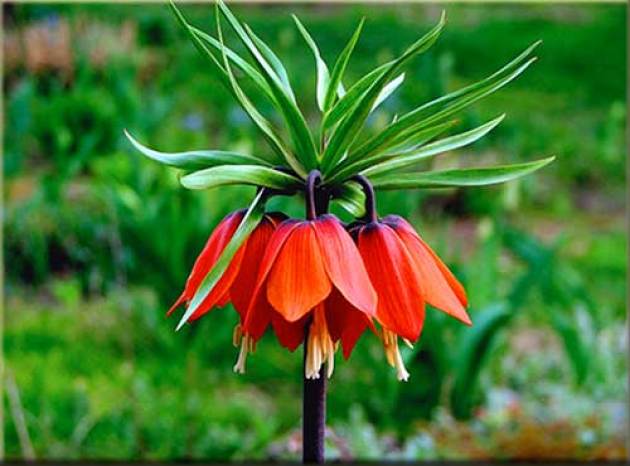
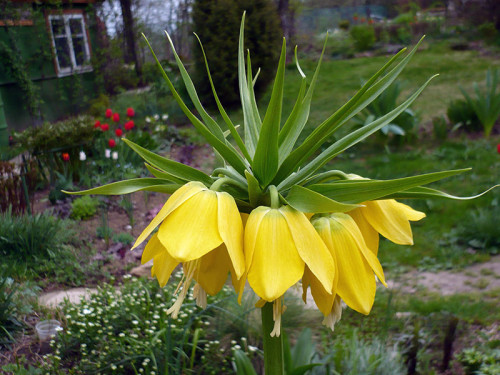
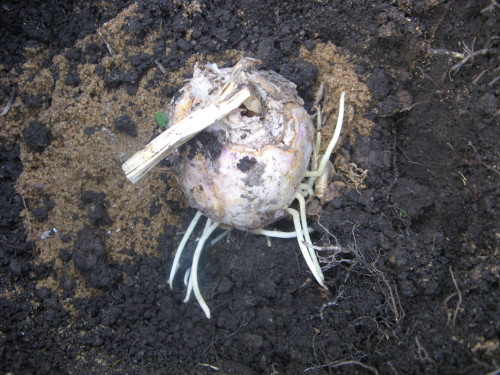
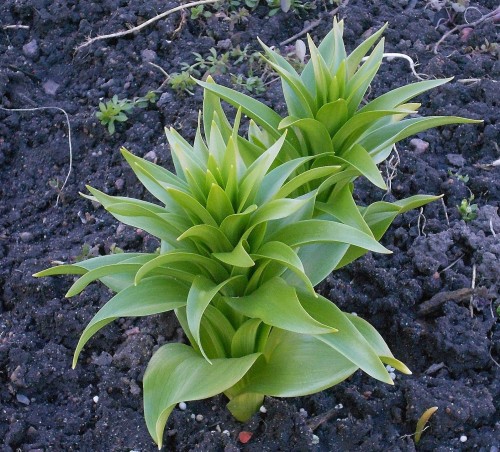
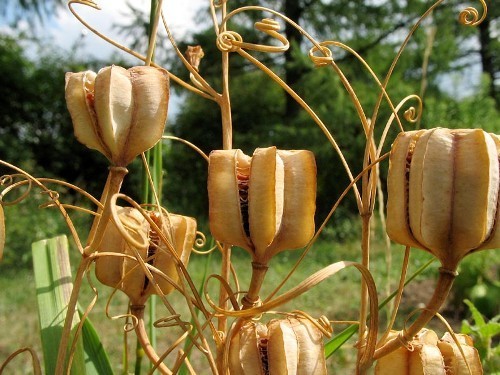

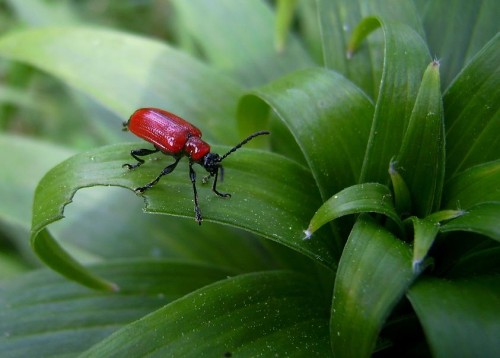
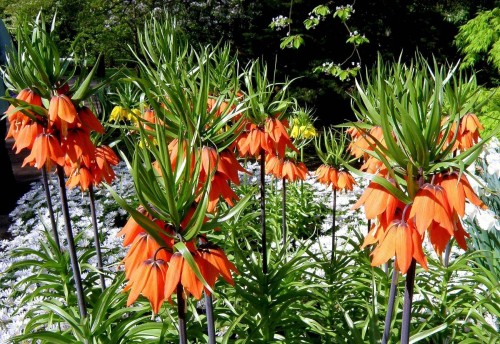
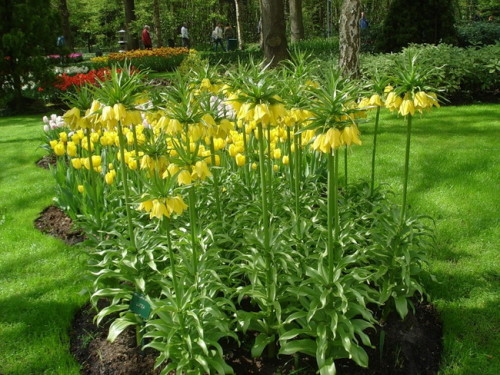












 Start a discussion ...
Start a discussion ...